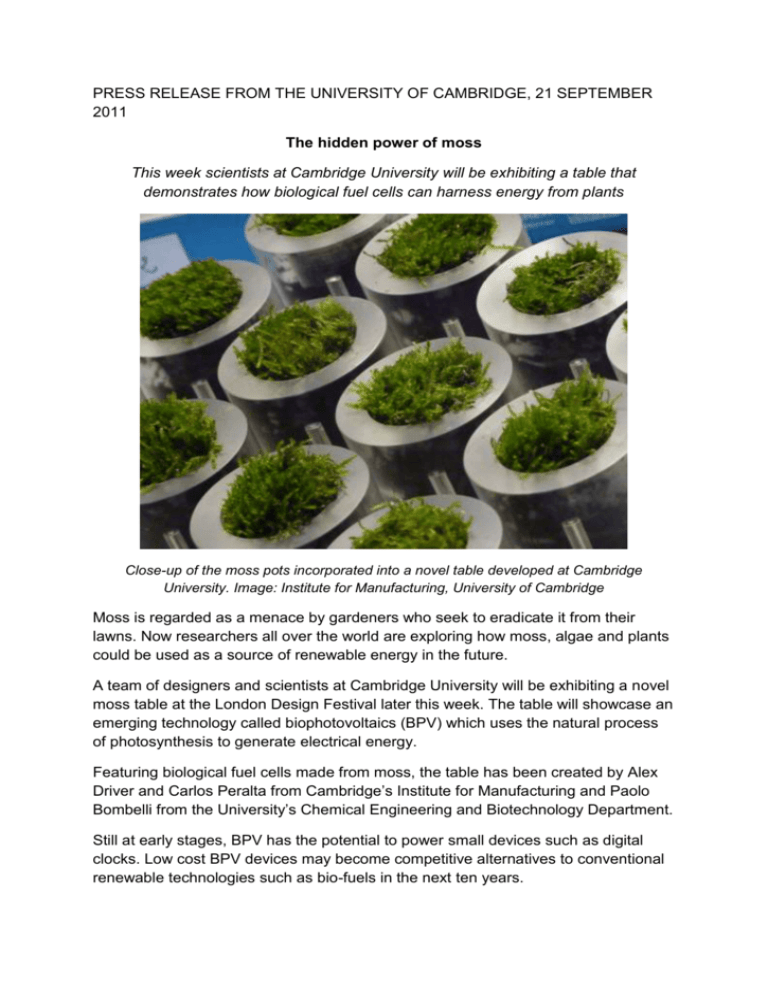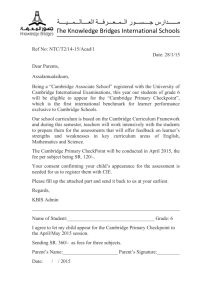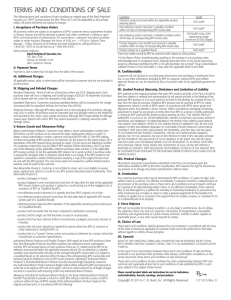- Institute for Manufacturing
advertisement

PRESS RELEASE FROM THE UNIVERSITY OF CAMBRIDGE, 21 SEPTEMBER 2011 The hidden power of moss This week scientists at Cambridge University will be exhibiting a table that demonstrates how biological fuel cells can harness energy from plants Close-up of the moss pots incorporated into a novel table developed at Cambridge University. Image: Institute for Manufacturing, University of Cambridge Moss is regarded as a menace by gardeners who seek to eradicate it from their lawns. Now researchers all over the world are exploring how moss, algae and plants could be used as a source of renewable energy in the future. A team of designers and scientists at Cambridge University will be exhibiting a novel moss table at the London Design Festival later this week. The table will showcase an emerging technology called biophotovoltaics (BPV) which uses the natural process of photosynthesis to generate electrical energy. Featuring biological fuel cells made from moss, the table has been created by Alex Driver and Carlos Peralta from Cambridge’s Institute for Manufacturing and Paolo Bombelli from the University’s Chemical Engineering and Biotechnology Department. Still at early stages, BPV has the potential to power small devices such as digital clocks. Low cost BPV devices may become competitive alternatives to conventional renewable technologies such as bio-fuels in the next ten years. The appeal of BPV lies in its ability to harness a natural process that takes place all around us. Photosynthesis occurs when plants convert carbon dioxide from the atmosphere into organic compounds using energy from sunlight. Plants use these organic compounds – carbohydrates, proteins and lipids – to grow. When the moss photosynthesises it releases some of these organic compounds into the soil which contains symbiotic bacteria. The bacteria break down the compounds, which they need to survive, liberating by-products that include electrons. The table designed by the Cambridge University team captures these electrons to produce an electrical current. The table is based on research into biophotovoltaics funded by the Engineering and Physical Sciences Research Council (EPSRC). This pioneering work involves collaboration between the Departments of Chemical Engineering and Biotechnology, Biochemistry and Plant Sciences at Cambridge University, and the Chemistry Department at Bath University. The research is led jointly byDr Adrain Fisher, Professor Christopher Howe and Professor Alison Smith at Cambridge, and Dr Petra Cameron at Bath. Carlos Peralta said: “The moss table provides us with a vision of the future. It suggests a world in which self-sustaining organic-synthetic hybrid objects surround us, and supply us with our daily needs in a clean and environmentally friendly manner.” Looking into the future, possible applications for BPV include solar panels, power stations and generators. Currently at concept stage, these are envisaged as sustainable solutions to pressing problems across the world – including the growing need for energy and fresh water from vulnerable communities. “A modular system of biological solar panels would be mounted on to the roof of a building to supply it with a portion of its energy requirements,” explained Alex Driver “A biophotovoltaic power station would comprise giant algae-coated lily-pads floating on the surface of the ocean near the coastline, generating energy for local communities. A biophotovoltaic generator would feature algae solar collectors mounted on floating buoys and anchored just offshore to generate energy and harvest desalinated water, which is a waste product of one of the chemical reactions occurring in the device.” The Cambridge team emphasised that the technology was at very early stages. “It will be a long time before a product powered by this technology will be commercially available,” said Dr James Moutrie, Head of the Design Management Group at the Institute for Manufacturing. “The table we are exhibiting this week demonstrates the ways in which designers can play a valuable role in early stage scientific research by identifying commercial potential and is one of the outcomes from our Design in Science research project.” For further information contact Alexandra Buxton, Office of Communications, University of Cambridge, amb206@admin.cam.ac.uk 01223 761673. The Design Management Group The Design Management Group (DMG) is one of the research centres at the Institute for Manufacturing, part of Cambridge University’s Department of Engineering. The DMG is interested in how design can be effectively managed to create sustainable, desirable, usable and producible new products and services. Central to this aim is the role of design as an integrator between technology and users. The Group is also active in understanding and promoting the importance of design at a national level. http://www.ifm.eng.cam.ac.uk/dmg/ Biophotovoltaics Prototype Biophotovoltaic devices have recently been constructed and tested in the laboratory, but a great deal of research is required in order to develop BPV into a commercially viable technology. Low cost BPV devices may become competitive alternatives to conventional renewable technologies such as bio-fuels in the next 10 years. Research into Biophotovoltaics is funded by the Engineering and Physical Sciences Research Council (EPSRC), and involves collaboration between the departments of Chemical Engineering and Biotechnology, Biochemistry and Plant Sciences at Cambridge University, and the Chemistry department at Bath University. The research is jointly led by Doctor Adrian Fisher, Professor Christopher Howe and Professor Alison Smith in Cambridge, and Doctor Petra Cameron in Bath. The table has been created by designers Alex Driver and Carlos Peralta, from the Institute for Manufacturing’s Design Management Group, together with Paolo Bombelli from the Chemical Engineering and Biotechnology Department. The London Design Festival The London Design Festival is one of the world's most important annual design events. The nine-day Festival programme is made up of over 200 events and exhibitions staged by over 160 partner organisations across the design spectrum and from around the world. The London Design Festival also works with some of the world's greatest designers and architects to create unique installations across the capital. The table will be exhibited at Designers block from 22-25 September as part of the London Design Festival. For more information, go to: http://www.verydesignersblock.com




